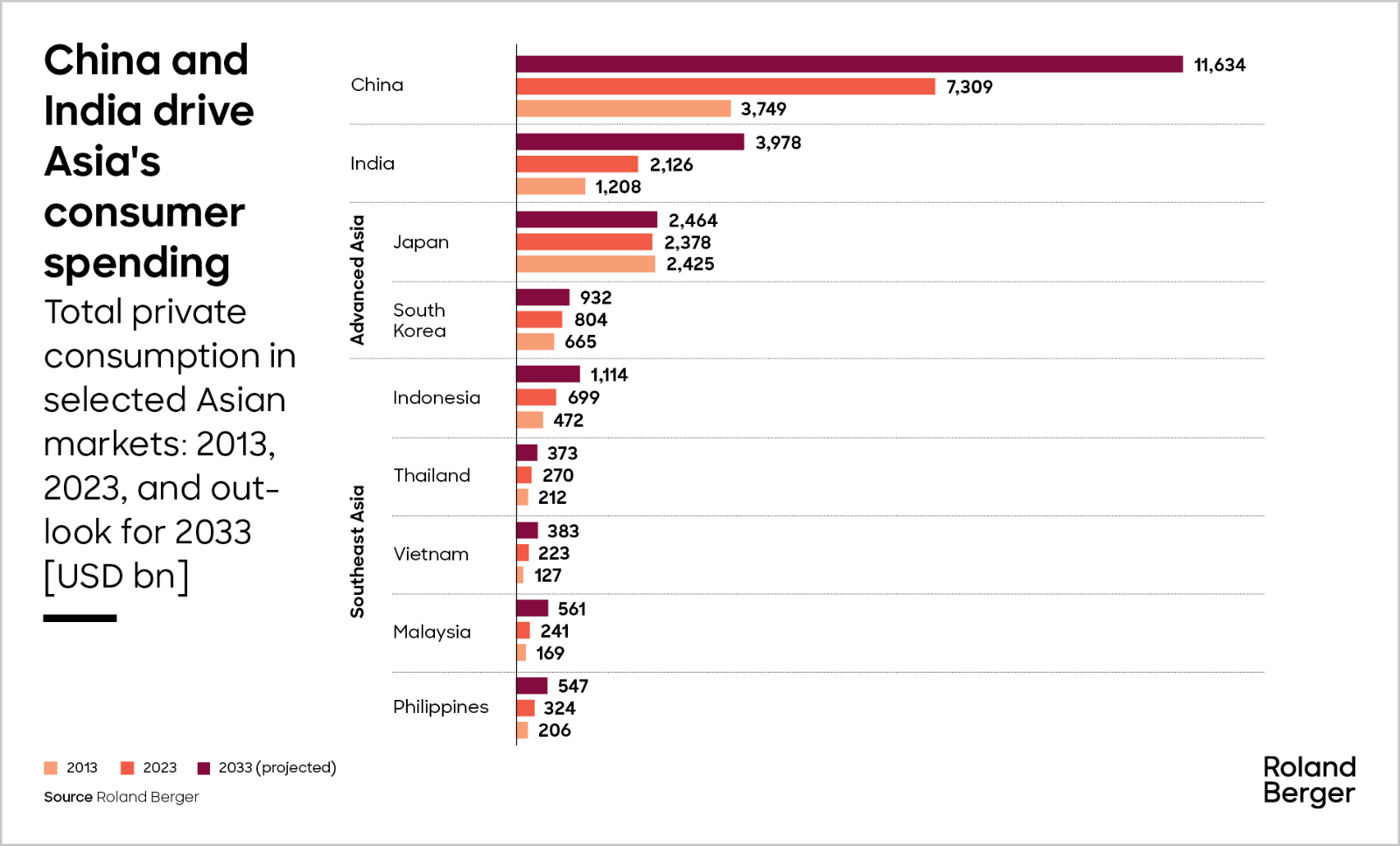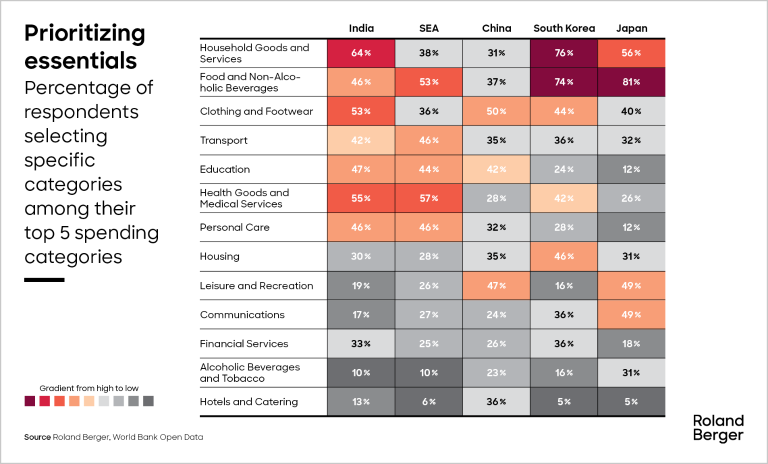Roland Berger’s latest consumer behavior report highlights the most important global trends and offers valuable insights for businesses in an uncertain period.


Unraveling Asia’s complex consumer landscape
By Hugo Texier
Roland Berger’s analysis of consumer trends in Asia offers valuable strategic insights for brands and retailers
Consumer spending in Asia is growing rapidly and now totals more than a quarter of the global market. India, and particularly China, are the key drivers. Nevertheless, moderation prevails, and Asians have a strong focus on affordability. There is a clear trend toward sustainable and healthy-living choices, while shoppers prefer domestic brands across all spending categories. Looking ahead, consumer sentiment varies across countries depending on GDP growth outlook.

"China will remain a power house for consumption adding twice the size of India total consumption in the next 10 years, with preferences differing to most other countries."
These are just some of the findings from our recent survey into consumer spending in Asia. For this first regional edition, we spoke with a range of participants in China, India, Japan, South Korea, Indonesia, Malaysia, Vietnam, the Philippines, and Thailand, gathering data on current shopping trends and looking ahead over the next two years. Our report looks at the potential winners across categories, channels, and brands, offering valuable insights on strategic imperatives.
China and India lead the way
Asia's consumer spending is expected to reach USD 16 trillion in 2024, representing 27% of the global market share. This sum is set to rise by USD 7 trillion by 2033. China and India will contribute more than three quarters of this increase, making the two an obvious cornerstone of any growth strategies.
Unsuprisingly, consumer sentiment is linked to the outlooks for GDP growth in each country. Most Asian consumers are confident their personal income will increase, with India, China, and Vietnam leading the way. However, a majority of shoppers in South Korea and Japan have a pessimistic outlook on the development of their disposable income over the next two years.
Where spending may increase
Food and household goods are the main priority for many consumers, except in China, where shoppers place the highest emphasis on clothing and footwear, and leisure and recreation. In most countries, shoppers aged 18-25 spend more on fashion and personal care.
Today’s most popular spending categories are the most likely to see increased spending over the next two years. Consumers in India are the most likely to up their overall outgoings, especially those currently in the low-income segment. Southeast Asia follows, while consumers in Advanced Asia countries (Japan and South Korea in this survey) are less optimistic. Despite strong prospects for GDP growth, Chinese consumers don’t expect to dramatically increase spending across most categories.
Our analysis of the region’s lifestyle preferences shows a clear appetite for healthy and sustainable living. Entertainment and pet ownership are also important, while luxury spending is less of a priority.
"International brands must localize their strategies in the face of fierce competition from domestic names."
Domestic brands dominate, while convenience is king
When asked whether they prefer domestic or international brands, a majority of participants favored domestic for each category, albeit to varying degrees. This is likely partly due to the rise of strong, digitally native Asian brands, which are often more agile and tailored to local consumers.
Convenience, safety, and personalized shopping experiences are driving the adoption of online retail, mobile payments, and omnichannel strategies among Asian consumers. In-person retail is far from dead, with just over two thirds of Asian consumers preferring an online/offline shopping approach, regardless of age and income level.
Recommendations for brands and retailers
A new competitive paradigm is entering the Asian consumer market: international brands are no longer the default choice for quality, value, and desirability. Brands and retailers looking for growth in the region must consider their approach more carefully than ever.
Our full report on Asian consumer preferences contains five recommendations to thrive amid this lucrative but complex landscape.
Register now to access the full publication and explore strategic insights derived from consumer trends in Asia. Furthermore, you get regular news and updates directly in your inbox.


_image_caption_w1280.png)











